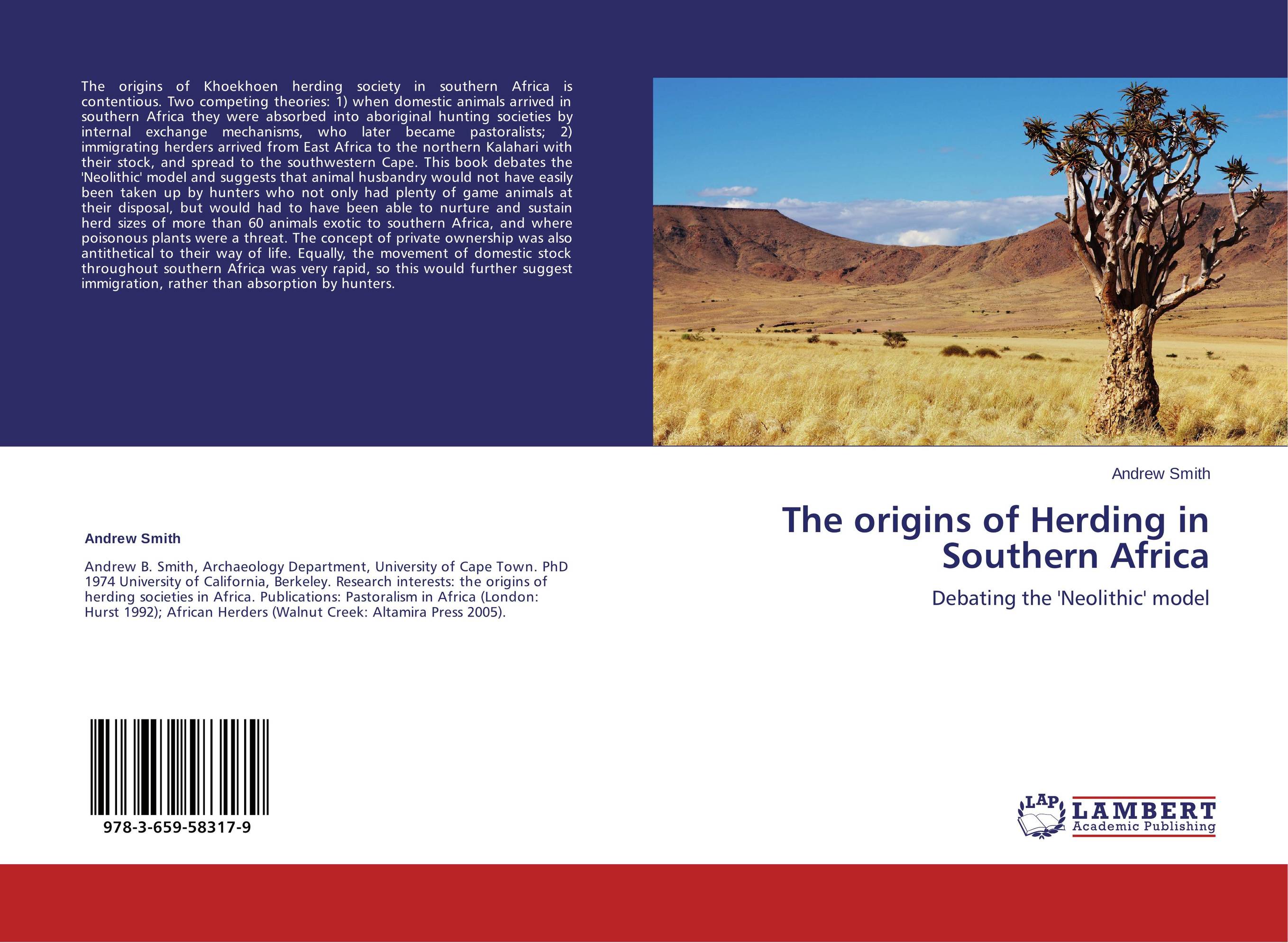| Поиск по каталогу |
|
(строгое соответствие)
|
- Профессиональная
- Научно-популярная
- Художественная
- Публицистика
- Детская
- Искусство
- Хобби, семья, дом
- Спорт
- Путеводители
- Блокноты, тетради, открытки
The origins of Herding in Southern Africa. Debating the 'Neolithic' model

В наличии
| Местонахождение: Алматы | Состояние экземпляра: новый |

Бумажная
версия
версия
Автор: Andrew Smith
ISBN: 9783659583179
Год издания: 2014
Формат книги: 60×90/16 (145×215 мм)
Количество страниц: 68
Издательство: LAP LAMBERT Academic Publishing
Цена: 23493 тг
Положить в корзину
| Способы доставки в город Алматы * комплектация (срок до отгрузки) не более 2 рабочих дней |
| Самовывоз из города Алматы (пункты самовывоза партнёра CDEK) |
| Курьерская доставка CDEK из города Москва |
| Доставка Почтой России из города Москва |
Аннотация: The origins of Khoekhoen herding society in southern Africa is contentious. Two competing theories: 1) when domestic animals arrived in southern Africa they were absorbed into aboriginal hunting societies by internal exchange mechanisms, who later became pastoralists; 2) immigrating herders arrived from East Africa to the northern Kalahari with their stock, and spread to the southwestern Cape. This book debates the 'Neolithic' model and suggests that animal husbandry would not have easily been taken up by hunters who not only had plenty of game animals at their disposal, but would had to have been able to nurture and sustain herd sizes of more than 60 animals exotic to southern Africa, and where poisonous plants were a threat. The concept of private ownership was also antithetical to their way of life. Equally, the movement of domestic stock throughout southern Africa was very rapid, so this would further suggest immigration, rather than absorption by hunters.
Ключевые слова: southern Africa, Neolithic, Bushmen, Khoekhoen, debate on herding origins, spread of pastoralism



